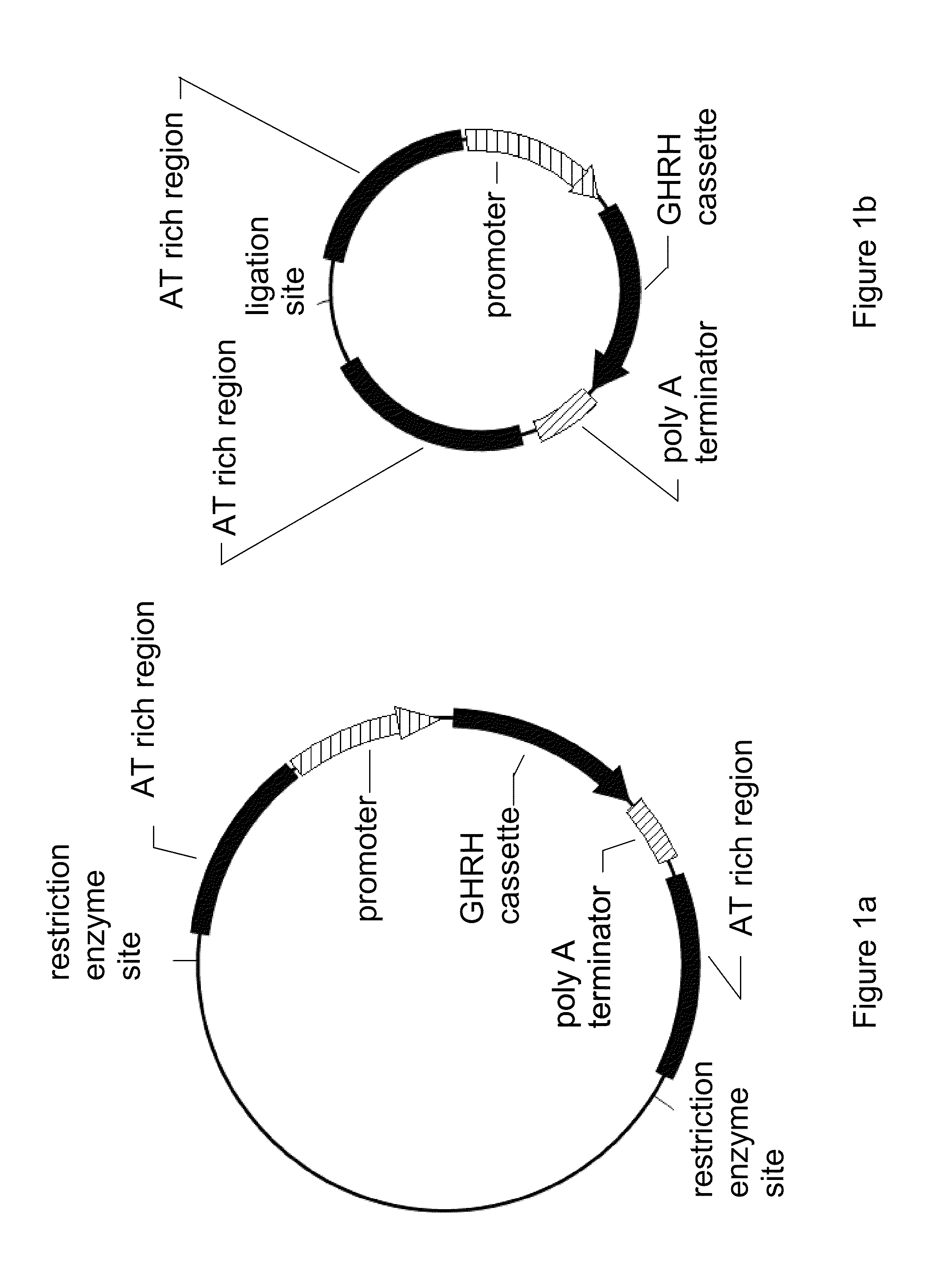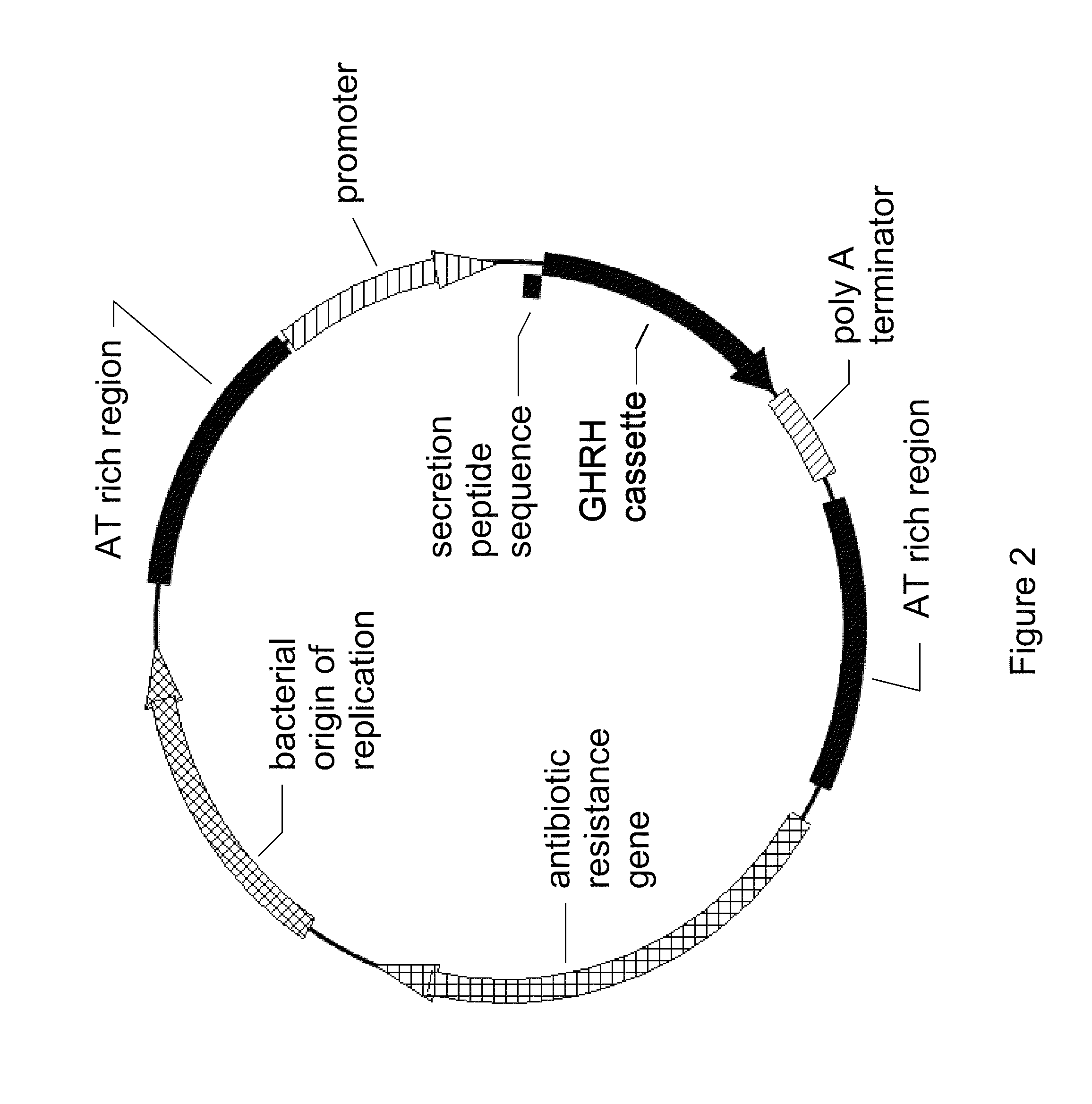Methods and compositions for gene therapy and GHRH therapy
a gene therapy and composition technology, applied in the field of dna constructs, can solve the problems of inability to supplement using conventional methods, dna gene therapy suffers from difficulty in producing enough gene products, and patients die and serious illnesses, so as to prolong the amount of time the agent is active, enhance the uptake of animal products, and enhance the effect of doi or some other anti-adjuvant agen
- Summary
- Abstract
- Description
- Claims
- Application Information
AI Technical Summary
Benefits of technology
Problems solved by technology
Method used
Image
Examples
Embodiment Construction
[0036]The Applicant discloses several embodiments and provides guidance for aspects of the method to be applied to other situations.
[0037]FIG. 1a is a diagram of generic plasmid containing the most basic features of the invention. There is a promoter and a poly-A terminator flanking the gene cassette, and these are, in turn, flanked by AT rich regions. Specific restriction enzyme sites are present to allow separation of the active therapeutic parts of the plasmid invention from the inactive parts. In practice, all of the regions shown may be spliced into virtually any generic plasmid, which may be raised in any suitable bacteria.
[0038]FIG. 1b is a diagram of a post-processed minimum therapeutic circlet. In FIG. 1a the plasmid comprises two restriction enzyme sites flanking the AT rich regions. Use of restriction enzymes followed by re-ligation of the sticky ends results in a circlet of DNA composed only of the active components. Said re-ligation of the sticky ends may occur by means...
PUM
| Property | Measurement | Unit |
|---|---|---|
| size | aaaaa | aaaaa |
| diameter | aaaaa | aaaaa |
| temperature | aaaaa | aaaaa |
Abstract
Description
Claims
Application Information
 Login to View More
Login to View More - R&D
- Intellectual Property
- Life Sciences
- Materials
- Tech Scout
- Unparalleled Data Quality
- Higher Quality Content
- 60% Fewer Hallucinations
Browse by: Latest US Patents, China's latest patents, Technical Efficacy Thesaurus, Application Domain, Technology Topic, Popular Technical Reports.
© 2025 PatSnap. All rights reserved.Legal|Privacy policy|Modern Slavery Act Transparency Statement|Sitemap|About US| Contact US: help@patsnap.com


